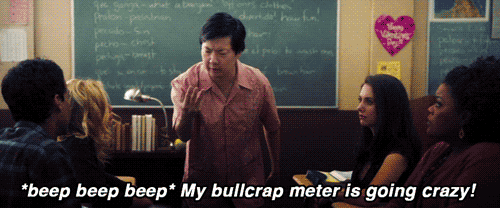A single, belated update this week. I’ve got my ongoing Ph.D. reading (did you know Leonard Cohen a) is Canadian and b) pre-music career, wrote a novel in which there is depressing sex on nearly every page?) and I’m also prepping a paper for submission to a journal, so things are busy.
To business! Today I’m pointing out that though there does seem to be a cultural divide between the categories of “human” and “nonhuman,” people in the pokéverse continually blur and trouble this divide through friendships with/ownership of pokémon. Episode 19 is the first time that one of the dominating concepts–that pokémon training allows you to access new experiences/relationships/empathy–is shown to be pretty obviously true. Yet the way that communication is only achieved by domination and ownership makes the message more complicated than the way it’s presented.
A bit of theory lite.
Ep. 19 is particularly concerned with inter-species conversations, and Sherryl Vint can help us here. Vint writes about inter-species communication in sci-fi and how shared language does not always bridge difference. She points us to a well-known Wittgenstein quote: “If a lion could talk we could not understand him.” Vint explains that “this is because language is integrally tied to a form of life, produced by concrete and embodied experience that varies among species.” Basically, different bodies result in different subjectivities. The mind of a cnidarian-cephalopod (Tentacruel) and that of a human pokémon trainer are irreducibly alien to each other.1 They can’t even think all of the same thoughts. Sharing a language won’t fix problems of communication caused by radical alterity. Instead, “truly communicating with an animal other is about facing a consciousness that is beyond ours” (Vint 68). Ecocritical scholar Timothy Morton explains that while we can’t get rid of the perspective that entraps us in our own subjective existence, by acknowledging “irreducible otherness” (151) that entrapping first-person perspective can “be made to vibrate, in such a way that does not strengthen its aggressive resolve. . . but that dissolves its form, however momentarily” (168). Admitting that there’s an undissolvable difference between us allows us to at least begin to grasp what that difference may mean.
Reading degrees of difference in the show
Difference is established from the start of ep. 19–Nastina’s view of the tentacools is that they’re “useless,” an obstacle or a challenge that must be eradicated. The reef is a prime development site, and the tentacools are not, in Nastina’s view, a part of it but extraneous flotsam to be cleared away. What matters to Nastina is profits. The Swarm, in contrast, have been defending their territory, something they consider to be “theirs.” The tentacools/Tentacruel aren’t aligned exclusively with the non-human, either, since the Swarm consider any pokémon who help the humans to be enemies. Basically, everyone wants different things and has very different ideas about the world.
When Misty climbs a tower and apologizes to Tentacruel, acknowledging that humanity is at fault, that admission of guilt  prompts the Swarm to withdraw. An acknowledgement of different needs, moralities and perspectives enables a truce. Not a peace–as I mentioned last week, Tentacruel warns that it will have its eye out for human incursion. But this is, I think, Morton’s “vibrating I.” The way the conflict ends is, for Pokémon, fairly subtle, as the difference is never re/dissolved completely. Instead Tentacruel realizes that humans might be capable of change and empathy; Misty and the others acknowledge that non-humans have needs and claims that conflict with and take precedence over human ends. It’s a moment of connection and communication.
prompts the Swarm to withdraw. An acknowledgement of different needs, moralities and perspectives enables a truce. Not a peace–as I mentioned last week, Tentacruel warns that it will have its eye out for human incursion. But this is, I think, Morton’s “vibrating I.” The way the conflict ends is, for Pokémon, fairly subtle, as the difference is never re/dissolved completely. Instead Tentacruel realizes that humans might be capable of change and empathy; Misty and the others acknowledge that non-humans have needs and claims that conflict with and take precedence over human ends. It’s a moment of connection and communication.
This communication can happen in the first place through the mediation of trained pokémon as translators between humans and uncaught pokémon. We’ve seen Pikachu act as the group’s “translator” already, like when they meet Charmander.2 Meowth translates for Team Rocket, too. This allows the human characters to communicate with strange ‘mon and even enter into new kinds of relationships–Team Rocket’s brief alliance with the Squirtle Squad, for example, and Charmander’s abandonment and eventual loyalty to Ash, are both enabled by the humans’ companion pokémon. In this episode, we see Ash’s ‘mon perform a similar role when Pikachu leaps on the back of Pidgeotto and delivers an impassioned speech on humanity’s behalf.
 This scene is particularly weird and important. So many characters cross their categorical boundaries that most end up in some confused middle ground of existence. First, by using Meowth as a translator, the Swarm is mimicking the way humans use pokémon. This confuses the human/pokémon dichotomy, usually clearly marked by who is using whom. Tentacruel and the Swarm here cross that line, using Meowth’s body so that they can clearly confront the humans in English.
This scene is particularly weird and important. So many characters cross their categorical boundaries that most end up in some confused middle ground of existence. First, by using Meowth as a translator, the Swarm is mimicking the way humans use pokémon. This confuses the human/pokémon dichotomy, usually clearly marked by who is using whom. Tentacruel and the Swarm here cross that line, using Meowth’s body so that they can clearly confront the humans in English.
Even when Pikachu confronts Tentacruel, and Tentacruel responds with its own booming, gravelly voice rather than Meowth’s English, the communication is not simply between two beings firmly occupying the same category. Tentacruel has already drawn a line in the sand and sees Pikachu, with his sympathy for humans, as an enemy. Remember how wild pokémon have hostility towards captive ‘mon? In being used by/aligned with humans, the identity of a pokémon is made queer–that is, a pokémon is made to occupy several (possibly conflicting) categories at once. Pikachu no longer fits neatly into an identifiable category. Pikachu alone can’t convince Tentacruel to show mercy, and Misty must intervene as well.
Yet the same relationship that makes a pokémon ambiguously aligned also makes the alignment of “trainer” queer as well. Misty intercedes for humanity, true; but earlier she expressed her rage on behalf of the reef’s non-human inhabitants. Prompted by a friendship with Horsea, she advocates for the tentacools even before they attack. Misty has already shown that she does not automatically place human ends before pokémons’ well-being, that she is prompted to think outside of her own human-embodied perspective.
We see a more explicit participation of the human in the non-human a few episodes (1.21) later, when we find out that trainers who raise caterpies/metapod/butterfree make a sort of pilgrimage every year during what Brock calls “the Season of Love.” “They come at this time every year,” he explains knowledgeably, “to release their butterfree.”
 This is really interesting. Voluntarily releasing a pokémon into the wild so that the breeding cycle can continue outside of human control is probably the most positive interaction with pokémon we’ve seen, for one thing. Humans here play an active role in the lives not only of individual butterfree but the species as a whole, participating in the ecological rhythms of the non-human world. 3 They do so by catching, raising, and then releasing butterfree, overseeing their lifecycle probably from the caterpie stage on. Humans don’t only participate through butterfree but also fit their human desires to them; releasing a butterfree into which you put time and energy is a sort of sacrifice. This isn’t concerned with speech, but there is a mediation. As humans form a relationship to their butterfree, those butterfree allow them to be a part of a non-human lifecycle.
This is really interesting. Voluntarily releasing a pokémon into the wild so that the breeding cycle can continue outside of human control is probably the most positive interaction with pokémon we’ve seen, for one thing. Humans here play an active role in the lives not only of individual butterfree but the species as a whole, participating in the ecological rhythms of the non-human world. 3 They do so by catching, raising, and then releasing butterfree, overseeing their lifecycle probably from the caterpie stage on. Humans don’t only participate through butterfree but also fit their human desires to them; releasing a butterfree into which you put time and energy is a sort of sacrifice. This isn’t concerned with speech, but there is a mediation. As humans form a relationship to their butterfree, those butterfree allow them to be a part of a non-human lifecycle.
In each of these examples we see the “vibration” of the subjectivity and category of the characters. This can be incredibly positive and actually does lead to understanding and coexistence, however uneasy. The problem is that I cannot get past that what enables this is the domination of a whole class of beings by another. It doesn’t matter how nice Ash is to Pikachu, the fact remains that Pikachu was at one point forcibly made the captive of humanity. Even the way the Swarm communicates is through the psychic domination of Meowth. As I noted before, they use Meowth for his body–his speech organs beings (curiously) more suited to human speech than the cnidarian-cephalopodic anatomy. This is no different than the way humans use pokémon bodies for their own ends. Someone must be controlled, dominated, or owned for these communications to take place. Is understanding impossible without this violation of autonomy and agency?
I don’t have an answer. I leave that to you all as weekend homework. I do want to end with a suspicion I had about…
Endnotes: anti-semitic imagery in tentacruel’s design
Look at it–it’s got a huge, hooked pincer-nose, and its pokédex description talks about its many hidden, grabby tentacles and how it can catch up  to “eighty prey” at a time. Add that to what Brock says in the episode, that “tentacool are known as the gangsters of the sea,” and how Ash quips that “Tentacruel must be their gang leader,” and I immediately got suspicious. Hook-nosed; elusive leader of an unseen cabal; covered in those “jewels” on the top of its dome; grasping and greedy with its many secretive, stretching tentacles; explicitly presented as Nastina’s economic enemy; these are all fairly common anti-semitic tropes. I looked into it and can’t find anything out there about tentacruel as a racialized cahracter. There are other pokémon that are problematic (see the large-lipped, dark-faced Jynx, best known for that episode in which we learn that they’re the manual laborers who assist Santa and yes this is a real thing and oh my willikers am I looking forward to talking about that one). I bring this up because if there are anti-semitic stereotypes at play in the tentacruel design, a discussion of the Other and of crossing categorical boundaries becomes far more complex. But because I can’t find anything about it anywhere, I’m ignoring it for now. For the record, when I watched ep. 19 I happened to be reading a novel about a Jewish Canadian after WWII, so this stuff was on my mind. I also really, really love that there’s a ‘mon that’s got cephalopodic characteristics (and octillery is very boring, do not get me started), and I like tentacruel a lot more after ep. 19; but after I considered anti-semitic stereotypes it was a “can’t be unseen” type thing. Thoughts?
to “eighty prey” at a time. Add that to what Brock says in the episode, that “tentacool are known as the gangsters of the sea,” and how Ash quips that “Tentacruel must be their gang leader,” and I immediately got suspicious. Hook-nosed; elusive leader of an unseen cabal; covered in those “jewels” on the top of its dome; grasping and greedy with its many secretive, stretching tentacles; explicitly presented as Nastina’s economic enemy; these are all fairly common anti-semitic tropes. I looked into it and can’t find anything out there about tentacruel as a racialized cahracter. There are other pokémon that are problematic (see the large-lipped, dark-faced Jynx, best known for that episode in which we learn that they’re the manual laborers who assist Santa and yes this is a real thing and oh my willikers am I looking forward to talking about that one). I bring this up because if there are anti-semitic stereotypes at play in the tentacruel design, a discussion of the Other and of crossing categorical boundaries becomes far more complex. But because I can’t find anything about it anywhere, I’m ignoring it for now. For the record, when I watched ep. 19 I happened to be reading a novel about a Jewish Canadian after WWII, so this stuff was on my mind. I also really, really love that there’s a ‘mon that’s got cephalopodic characteristics (and octillery is very boring, do not get me started), and I like tentacruel a lot more after ep. 19; but after I considered anti-semitic stereotypes it was a “can’t be unseen” type thing. Thoughts?
1. There’s a truly bizarre, I think brilliant book called Vampyroteuthis Infernalis: A Treatise by Vilém Flusser. It’s a “fable” tracing the evolutionary/biological differences between humans and the vampire squid and trying to imagine the different subjectivities. Some of the conclusions revolve around the development in a spiral/coil rather than from fours to vertical, and utterly different relationships to epistemology and psychology. Sample quote:
Its tentacles, analogous to our hands, are digestive organs. Whereas our method of comprehension is active–we perambulate a static and established world–its method is passive. . . it takes in a world that is rushing past it. We comprehend what we happen upon, and it comprehends what happens upon it. Whereas we have ‘problems,’ things in our way, it has ‘impressions.’ . . . Culture is therefore, for it, an act of discriminating between digestible and indigestible entities, that is, a critique of impressions. . . a discriminating and critical injection of the world into the bosom of the subject. (39)
2. The implication is that humans who are familiar with a pokémon can understand its pokéspeech or its gestures. This is true in our own world, more or less, with our companion animals’ body language and noises. When I was about eight I was very good at predicting whether my dog would stop for a pee or a poo, just by observing his body language when he started sniffing around. I called the different stances “poo stanza two” and “pee stanza three,” because I enjoyed rhymes and also I thought that “stanza” meant “stance.”↩
3. I wonder if any pokémon have evolved (in the slower sense of the word) so that their life cycle depends on or at least makes room for human intervention? Maybe this is how we explain pokémon that only evolve when traded?↩

 This ep. is the first time we see humans and the non-human world coming into conflict in a way that we recognize as a nature/culture divide. I’m going to start with a section on apocalypse narrative (skip if you don’t want to read about capitalism and Latour) and then think about the episode through this lens (skip if you don’t like Pokémon, hahaha, jk, everyone likes the ‘mon).
This ep. is the first time we see humans and the non-human world coming into conflict in a way that we recognize as a nature/culture divide. I’m going to start with a section on apocalypse narrative (skip if you don’t want to read about capitalism and Latour) and then think about the episode through this lens (skip if you don’t like Pokémon, hahaha, jk, everyone likes the ‘mon). capitalism to the ground. Or, rather, someone from outside must do so, some fantasy manifestation of the eucatastrophic destroyer of worlds–think Godzilla or Ponyo. Preferably Ponyo.
capitalism to the ground. Or, rather, someone from outside must do so, some fantasy manifestation of the eucatastrophic destroyer of worlds–think Godzilla or Ponyo. Preferably Ponyo.


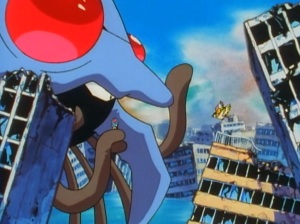
 single tentacool is the voice of the swarm, speaking through Meowth. Even then, though, it speaks for all of the swarm. The tentacled menace acts with a legitimately creepy, single will (a hive mind or a psychic link?). The body (Tentacruel) holds the voice (Meowth), effectively making what could be a hydra-like threat into a single entity.
single tentacool is the voice of the swarm, speaking through Meowth. Even then, though, it speaks for all of the swarm. The tentacled menace acts with a legitimately creepy, single will (a hive mind or a psychic link?). The body (Tentacruel) holds the voice (Meowth), effectively making what could be a hydra-like threat into a single entity. humans can justifiably fight back because they paid for their faults. It’s okay once again to commit acts of violence against the non-human. As in most escapist apocalyptic fantasies, the destructive waters and fires of the deluge wash away human civilization and human guilt.
humans can justifiably fight back because they paid for their faults. It’s okay once again to commit acts of violence against the non-human. As in most escapist apocalyptic fantasies, the destructive waters and fires of the deluge wash away human civilization and human guilt.
 Unless Kanto’s humans have some pretty bananas genes and also issues with incest, there has to be a connection, right? Are Nastina and her “cousin” reject Joy-clones? The episode goes out of its way to remark on how grotesquely ugly Nastina is; abnormally short with exaggerated features and stiff, gnarly hair, Nastina seems almost malformed. She’s also quite spry, so it doesn’t seem to be the fault of age. Maybe she actually is malformed, a cast-off from a bad batch of cloned Joys. She may even be an earlier experimental model. Perhaps cloned Joys age quickly and are hidden away on island towns and kept comfortable in their last days? (Also apparently given access to heavy weaponry?) It’s total speculation, but just like the Mewtwo bas relief on Bill’s lighthouse door, it’s too strange a coincidence to just ignore.
Unless Kanto’s humans have some pretty bananas genes and also issues with incest, there has to be a connection, right? Are Nastina and her “cousin” reject Joy-clones? The episode goes out of its way to remark on how grotesquely ugly Nastina is; abnormally short with exaggerated features and stiff, gnarly hair, Nastina seems almost malformed. She’s also quite spry, so it doesn’t seem to be the fault of age. Maybe she actually is malformed, a cast-off from a bad batch of cloned Joys. She may even be an earlier experimental model. Perhaps cloned Joys age quickly and are hidden away on island towns and kept comfortable in their last days? (Also apparently given access to heavy weaponry?) It’s total speculation, but just like the Mewtwo bas relief on Bill’s lighthouse door, it’s too strange a coincidence to just ignore.








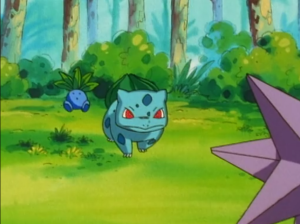
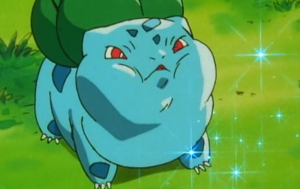
 Melanie is kind but also the most dangerous character we’ve encountered. Team Rocket is more sinister and malevolent, but Melanie is the only one who’s actively sought to harm anyone. Her drastic measures underscore her desperation to create a place where no other humans can safely come.
Melanie is kind but also the most dangerous character we’ve encountered. Team Rocket is more sinister and malevolent, but Melanie is the only one who’s actively sought to harm anyone. Her drastic measures underscore her desperation to create a place where no other humans can safely come.
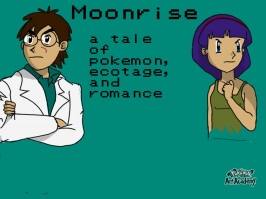


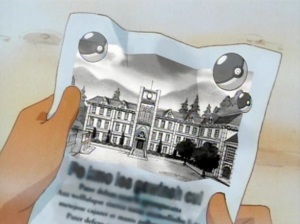 that guarantees its graduates entrance into the Pokémon League. The brochure says it’s for trainers who want to challenge the League “without having to travel on difficult badge collecting journeys.”
that guarantees its graduates entrance into the Pokémon League. The brochure says it’s for trainers who want to challenge the League “without having to travel on difficult badge collecting journeys.”

